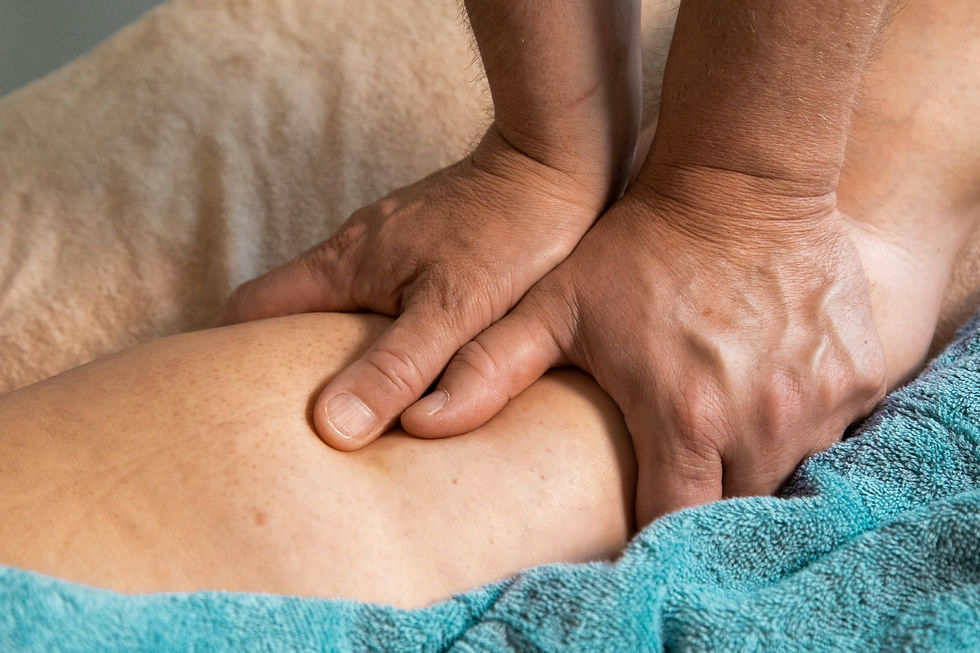Scars, NeuroKinetic Therapy, Your Brain and Clever Skin Receptors
- Kaye Woodgate
- Mar 26, 2024
- 3 min read
Updated: Mar 30, 2024
As a teacher of Pilates Therapy in Wimborne, and an advanced NeuroKinetic Practitioner, here is a good question to raise and ponder on with you today.
Why do we get tightness, pain, osteoarthritic changes in our body’s tissues?
Is it just “one of those things”, randomly hitting some of us and not the others?
The answer to this question is not always straightforward - but I am not of the opinion that these are random events. Everything I have seen so far gives me confidence to say that there would have been something in our past life and medical history that kick-started the chain of events that eventually caused us a problem.
What can those triggers be?
Look no further than significant things like injuries, falls, concussions, surgeries, scars, as well as big emotional upheavals.
In the case of physical injuries, the cuts, scarring, injury and healing processes can easily create local skin and pain receptor dysfunctions…. Oooh, clever jargon alert - what are these fancy-sounding things?
Skin contains many sensory receptors that pass information about the environment to our brain - informing us of danger or safety at any one point. This information is telling the brain about the quality of touch, pressure, vibration, motion, and tension in the skin.
Just listen to the names of these clever little structures in our skin:
Meissner's corpuscles, Pacinian corpuscles, Merkel's disks, and Ruffini's corpuscles.
Aren’t they exotic sounding?
When we suffer an injury, when skin is disrupted, these structures can become dysfunctional. And, possibly through over-sensitisation, they can start treating the local disruption as a constant source of danger and pass the “I am not happy with what is going on” signal to the brain. Getting stuck in a loop and keeping sending faulty information, constantly getting the brain worried about the state of that area in the body.
The brain has to respond to it. How?
Would the brain increase activity around the “danger area” - or suppress it - what do you think?
It is probably fairly easy to imagine and guess that the brain would want to “downregulate”, or reduce, the local activity around the troubled area.
In cases of scars, this can easily mean changing the activity of local muscles that have been impacted by scarring. The brain tries to reach greater safety by reducing their availability. It is a bit like us not wanting to stir up troubling memories by stopping visits to a place where bad things happened.
Problem is - what if it is a really key area, such as abdominals, which is part of our deep core system helping our pelvis stay stable?
We can have a long term weakening of the surrounding muscles. And that creates an impact to neighbouring areas, such as hips, ribcage and torso muscles, shoulders, etc… and then the chain of events goes on and on.
Without going into this much deeper - I hope I clarified why scars, concussions, huge big falls and such like are so important to our body and create impact to our physical health that can last a lifetime, until treated.

Now, for the all-important question…
HOW can this be addressed?
The tool of choice that I use is NeuroKinetic Therapy (NKT) to locate, treat, rebalance and calm down the local disrupted activity, and then activate the sleepy muscles that have been “disconnected” from the brain’s immediate awareness, and therefore underused.
The changes experienced can be immediate, wide-ranging and profound. If you have a scar, such as a C-section or a hysterectomy scar, do give me a call and we can discuss what can be done about it.
And next time, I can tell you more about the impact of emotional matters that overlie these events, as they can be even more great and far-reaching.
To your health
Kaye




Comments